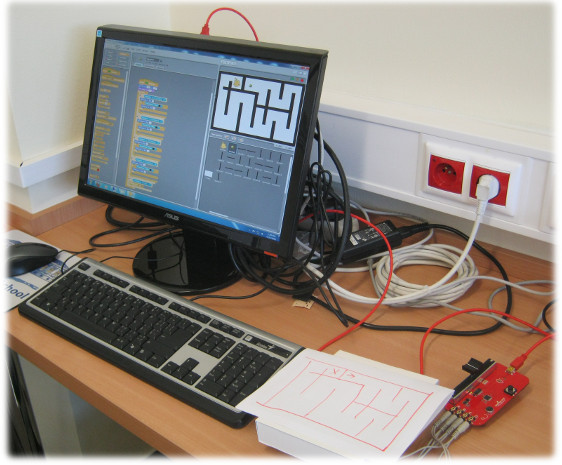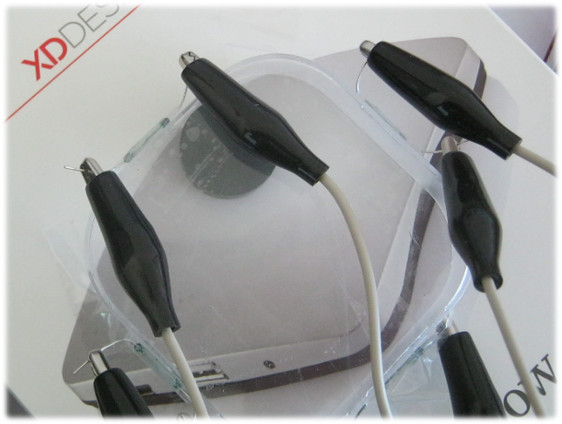Many years ago I coined the phrase ‘conceptual magpie’. Some people would argue that I’m not the first to think this way – depending on which online source you believe, either Dali or Picasso apparently said “Good artists copy, great artists steal.”
Like so many other teachers, I trawl forums, twitter feeds, blogs and books in search of that elusive holy grail – inspiration. The other day, I saw something that caught my imagination @joshburker embedded a video from https://t.co/Jyle5Z2KHp and I knew I’d have to introduce the Robo-Sharks to this when we next met.
We’ve done outrageous user-interfaces before:
- A Red Nose Day Joy Balloon
- The Joy Can – a liquid-filled 3D tilt switch
- Computer-Moderated Board Games
- Bottle-top Buttons
Come to Scratch in Control – our free one day training course for teachers in Prague on Scratch Day, May 18 2013 – and you’ll see some of these (and much more) in action. But rather than use a Makey-Makey, I decided to do this one with a Picoboard – just for fun.

There are loads of ways we could have tackled this – one of the Robo-Sharks suggested we could have just taped a JoyCan to the bottom of the maze controller. That’s what I like to see – build on an existing solution. But not this time. I wanted something that would be reasonably easy for other teachers to replicate in class. And, as another student had already pointed out; letting kids loose with cans that are half-full of water in close proximity to computers is tempting fate a little…
So, just to be different, I decided to use four reed switches (they call them jazýčkový spínač – tongue switches – here in the Czech Republic). They switch on/off if they are in close proximity to a magnet. I taped each of them to the outside of a thin plastic container, and put a magnet – the type you use to attach things to fridge dooor and whieboards – to roll around inside it.

This was then taped to the bottom of a spare thin card box I just happened to have lying around, and a copy of the maze I’d drawn in Scratch variant BYOB was taped onto the top. No expense spared here – Heath Robinson, Rube Goldberg, you aint seen nothing…
The most difficult part of the whole exercise was ensuring that a downwards left tilt corresponded to a left roll of the ball on the screen and so on…
It was fun, reasonably cheap (4 reed switches cost about the equivalent of US$4 here) – the components can be easily re-used/recycled and the coding can be as simple/difficult as you want.
To extend it – a classier endgame sequence would be a start, A timer, a score including penalties for hitting the edges. I’d favour an ‘augmented reality’ style of approach – taking a photo on the maze controller and perhaps shifting it slightly when the controller is tilted.
My students wanted to add monsters to avoid…
Personally, I’d go for a curriculum-related option instead. Navigate the maze to collect three numbers that add up to 100 or which are all factors of 108. Make your way to the exit while spelling out a key vocabulary term by rolling the ball over specific letters placed in strategic points in the maze.
